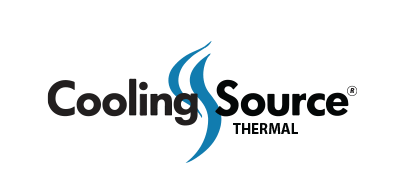In the industrial industry, heatsinks are commonly employed to manage heat dissipation in various electronic systems and equipment. Industrial applications often involve high-power components and rugged environments, making effective heat management essential for optimal performance, reliability, and longevity. Here are some key applications of heatsinks in the industrial sector:
- Motor Drives: Industrial machinery and equipment, such as motors, pumps, and conveyors, rely on motor drives for precise control and operation. Motor drives can generate substantial heat during high-speed or continuous operation. Heatsinks are utilized in motor drives to dissipate heat and prevent overheating, ensuring the efficient performance and longevity of the motors and drives.
- Power Electronics: Industrial applications involve the use of power electronics, including inverters, rectifiers, power supplies, and motor controllers. These components are responsible for converting and controlling electrical power. However, they can generate significant heat due to power dissipation. Heatsinks are employed to manage heat dissipation in power electronics, preventing thermal issues and maintaining their performance and reliability.
- Industrial Automation: Heatsinks play a crucial role in industrial automation systems, which often incorporate powerful processors, programmable logic controllers (PLCs), and other electronic components. These systems control and monitor various processes in manufacturing, assembly lines, and industrial facilities. Heatsinks are integrated into these components to dissipate the heat generated during continuous operation, ensuring stable performance and preventing overheating-related failures.
- Welding and Cutting Equipment: Industrial welding and cutting equipment, such as arc welders and plasma cutters, produce intense heat during their operation. The power electronics and control systems within these devices generate significant heat as well. Heatsinks are employed to dissipate the heat and prevent overheating, ensuring the reliability and longevity of the equipment.
- Industrial Control Cabinets: Industrial control cabinets house various electronic components, such as controllers, power supplies, and interface modules. These components generate heat during operation, particularly in enclosed cabinet environments. Heatsinks are used to manage heat dissipation within the cabinets, preventing temperature rise and maintaining optimal operating conditions for the components.
- Industrial Lighting: High-intensity industrial lighting systems, such as LED fixtures and high-intensity discharge (HID) lamps, generate heat during operation. Heatsinks are employed in these lighting systems to dissipate heat, preventing thermal issues and maintaining the performance and lifespan of the lighting fixtures.
In summary, heatsinks are widely used in the industrial industry to manage heat dissipation in electronic systems and equipment. They contribute to the performance, reliability, and longevity of motor drives, power electronics, industrial automation systems, welding and cutting equipment, control cabinets, and industrial lighting. By effectively dissipating heat, heatsinks help ensure the efficient operation of industrial applications in demanding environments.
Heatsinks for Robotics
Heatsinks are also widely used in the robotics industry to manage heat dissipation in robotic systems. Robots often incorporate powerful processors, motor controllers, and other electronic components that generate heat during operation. Excessive heat can lead to performance degradation, reduced lifespan of components, and even system failures. Heatsinks are employed to address these thermal challenges and maintain the functionality and reliability of robotic systems.
Here are some key applications of heatsinks in the robotics industry:
- Robot Controllers: Robotics systems rely on sophisticated control units that include microcontrollers or embedded systems. These controllers process vast amounts of data and perform complex calculations, leading to heat generation. Heatsinks are integrated into the controllers to absorb and dissipate heat, preventing overheating and ensuring reliable operation.
- Motor Drives: Robotic systems often employ motors for various tasks, such as locomotion, arm movement, or gripping. Motor drives control the speed and torque of these motors, and they can generate significant heat during operation. Heatsinks are utilized in motor drives to dissipate heat and maintain optimal performance and efficiency of the motors.
- Power Electronics: Robotics systems may include power electronics components, such as voltage regulators, motor drivers, and power amplifiers. These components are responsible for controlling and supplying power to various subsystems. However, they can generate substantial heat due to power dissipation. Heatsinks are employed to manage this heat and prevent thermal issues that could impact the performance and reliability of the power electronics.
- Artificial Intelligence (AI) Processors: With the increasing use of AI and machine learning algorithms in robotics, high-performance processors, such as graphics processing units (GPUs) and field-programmable gate arrays (FPGAs), are utilized for real-time computations. These processors can generate significant heat during intense computational tasks. Heatsinks are integrated into the AI processor units to dissipate the heat and maintain their performance and longevity.
- Manipulator Systems: Robotic arms and manipulator systems often incorporate servo motors, which are responsible for precise control of joint movements. These motors can generate heat during continuous operation. Heatsinks are employed to dissipate the heat generated by the servo motors, ensuring their efficient operation and preventing overheating-related issues.
Overall, heatsinks are essential in the robotics industry to manage heat dissipation in electronic components and maintain the performance, reliability, and lifespan of robotic systems. By effectively managing heat, heatsinks contribute to the optimal functioning of robots in various applications, ranging from industrial automation to autonomous vehicles and advanced research robots.



